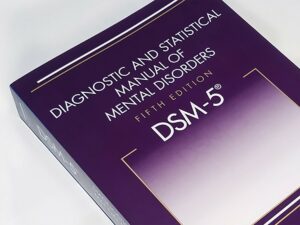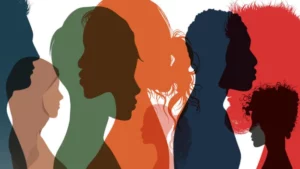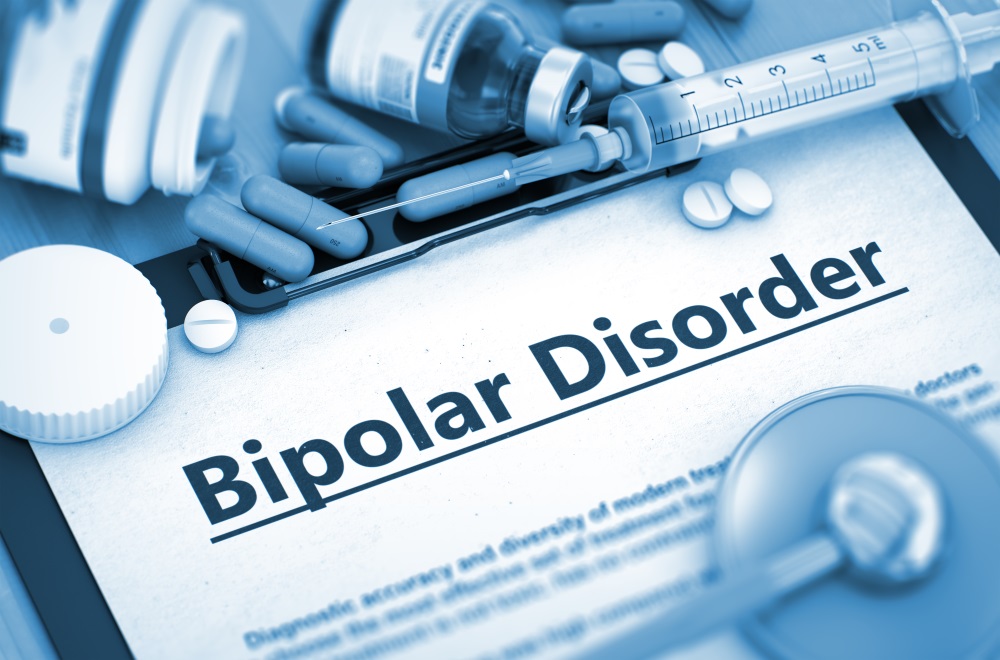The new DSM-5 diagnostic criteria for bipolar disorder was recently released, and it has caused a lot of confusion among mental health professionals and the general public. The biggest change in the DSM-5 is that bipolar disorder is now divided into two categories: bipolar I and bipolar II. In this blog post, we will discuss the new diagnostic criteria for bipolar disorder and how they will impact diagnosis and treatment.
Contents
Defining Bipolar Disorder

Bipolar disorder is a mental illness that is characterized by extreme mood swings. These mood swings can range from manic episodes (a period of abnormally high energy and activity) to depressive episodes (a period of low energy and activity). Bipolar disorder can also cause changes in sleep, appetite, and energy levels. People with bipolar disorder may also experience psychotic symptoms, such as hallucinations or delusions.
There are types of bipolar disorder, which are defined by the severity and frequency of mood swings.
- Bipolar I disorder is characterized by manic episodes that last for at least seven days, or manic episodes that are so severe that they require hospitalization.
- Bipolar II disorder is characterized by depressive episodes that alternate with periods of hypomania (a less severe form of mania).
- Cyclothymic disorder is a milder form of bipolar disorder that is characterized by shorter and less severe mood swings.
Despite the differences in the types, all forms of bipolar disorder can be debilitating and make it difficult for people to live a normal, productive life.
Defining DSM-5

DSM-5, also known as the Diagnostic and Statistical Manual of Mental Disorders, is the handbook used by mental health professionals to diagnose mental disorders. The DSM-IV was released in 1994 and was the most recent revision of the DSM until the DSM-5 was released in 2013.
The DSM-5 is the most recent revision of the DSM and it includes a number of changes to the way mental disorders are diagnosed. One of the most significant changes is the inclusion of dimensional measures in addition to the traditional categorical measures. The inclusion of dimensional measures will allow for a more nuanced understanding of mental disorders, as well as provide a framework for research.
DSM-5 Criteria For Bipolar Disorder

The DSM-IV defined two types of bipolar disorder: bipolar I and bipolar II. However, the DSM-V now includes a third category: cyclothymic disorder. In addition, the criteria for diagnosing bipolar disorder have been changed in the DSM-V. As mentioned above, there are three major types or categories or types of bipolar disorder. We will understand the diagnostic criteria for each category below.
Bipolar I
Bipolar I is characterized by manic episodes that last for at least seven days, or manic episodes that are so severe that they require hospitalization. In order to get a diagnosis for bipolar 1, the manic episode should last for at least one week. The person should also have three or more of the following symptoms:
- Inflated self-esteem or grandiosity
- Decreased need for sleep
- More talkative than usual or under pressure to keep talking
- Flight of ideas or racing thoughts
- Distractibility
- Increased goal-directed activity (e.g., work, school, social, sexual) or psychomotor agitation
These represent a change from the person’s normal functioning and they should be severe enough to cause impairment in work, school, or social life.
Bipolar II
Bipolar II is characterized by depressive episodes that alternate with periods of hypomania (a less severe form of mania). In order to get a diagnosis for bipolar II, the person must have had at least one major depressive episode that lasted for two weeks or more. In addition, the person must have experienced at least one hypomanic episode (a less severe form of mania). The symptoms of a hypomanic episode include:
- Feeling unusually happy or optimistic
- Being more talkative than usual
- Having a decreased need for sleep
- Feeling like you’re “on top of the world”
- Being easily distracted
- Having an increased sex drive
- Engaging in risky behaviors (e.g., spending sprees, impulsive decisions)
Additionally, the symptoms should not be severe enough to cause a break from reality (psychosis).
Cyclothymic disorder
Cyclothymia is a milder form of bipolar disorder that is characterized by shorter and less severe mood swings. The symptoms of cyclothymia are similar to the symptoms of bipolar disorder, but they are not as severe. In order to be diagnosed with cyclothymia, a person must have had periods of hypomania and depression for at least two years (one year in children and adolescents).
There are also other additional criterion that must be met in order for a person to be diagnosed with bipolar disorder. These include:
- The symptoms are not due to the effects of drugs, alcohol, or another medical condition.
- Symptoms are not better explained by another mental disorder, such as schizophrenia or schizoaffective disorder.
- The symptoms cause significant distress or impairment in work, school, or other important areas of functioning.
- Symptoms are not due to the normal ups and downs of life.
Impact on Diagnosis and Treatment
The changes to the DSM-5 will have a significant impact on diagnosis and treatment.
- First, the inclusion of dimensional measures will allow for a more accurate diagnosis of mental disorders.
- Second, the changes to the diagnostic criteria will impact how mental disorders are treated. For example, bipolar disorder is now divided into two categories: bipolar I and bipolar II. This change will likely lead to different treatment protocols for each type of bipolar disorder.
- Finally, the changes to the DSM-5 will also impact research on mental disorders. The inclusion of dimensional measures will provide a new framework for research that can be used to better understand mental disorders and develop new treatments.
The changes to the DSM-5 are sure to cause some confusion in the short term, but they have the potential to improve our understanding of mental disorders and lead to more effective treatments.
It is also important to note that some of the signs and symptoms of bipolar disorder can be mistaken for other conditions, such as depression, anxiety disorders, schizophrenia, substance abuse, or attention deficit hyperactivity disorder (ADHD). It is important to get a proper diagnosis from a mental health professional in order to ensure that you are receiving the most effective treatment.
Who Can Diagnose Bipolar Disorder From DSM-5?

There is a variety of mental health professionals who can diagnose bipolar disorder using the DSM-5. These include:
- Psychiatrists: Psychiatrists are medical doctors who specialize in the diagnosis and treatment of mental disorders.
- Psychologists: Psychologists are trained in the assessment and diagnosis of mental disorders.
- Licensed Clinical Social Workers: Licensed clinical social workers (LCSWs) are trained in the assessment and diagnosis of mental disorders.
- Counselors: Counselors are trained in the assessment and diagnosis of mental disorders.
The above professionals can use the DSM-V to diagnose bipolar disorder, however, only a psychiatrist can prescribe medication. If you think you or someone you know may have bipolar disorder, it is important to seek professional help. Early intervention and treatment can often prevent the development of more severe symptoms and improve long-term outcomes.
Treatment Options
If you have an official diagnosis for bipolar disorder from a mental health professional, there are a number of treatment options available.
The most common treatments for bipolar disorder include:
- Medication
Medication is often used to stabilize mood and treat the symptoms of bipolar disorder. The most common type of medication used to treat bipolar disorder is a mood stabilizer. Other types of medications that may be used include antipsychotics, antidepressants, and anti-anxiety medications.
- Psychotherapy
Psychotherapy is often used in conjunction with medication to treat bipolar disorder. Cognitive-behavioral therapy (CBT) is one type of psychotherapy that has been shown to be effective in treating bipolar disorder. CBT can help individuals manage their symptoms and improve their functioning. There are also other types of therapies such as family-focused therapy and interpersonal and social rhythm therapy that can be effective in treating bipolar disorder.
- Hospitalization
In some cases, individuals with bipolar disorder may require hospitalization for treatment. This is typically only necessary if an individual is exhibiting severe symptoms that are a danger to themselves or others. Electroconvulsive therapy (ECT) is a method used in hospitals that involves passing electrical currents through the brain to induce seizures. ECT is typically used as a last resort when other treatments have failed.
- Lifestyle Changes
There are also a number of lifestyle changes that can help manage the symptoms of bipolar disorder. These include:
-Eating a healthy diet
-Exercising regularly
-Getting enough sleep
-Limiting alcohol consumption
-Avoiding drugs
Bipolar disorder is a serious mental illness that requires treatment. If you think you or someone you know may have bipolar disorder, it is important to seek professional help. With proper diagnosis and treatment, individuals with bipolar disorder can lead happy and successful lives.
Conclusion
In conclusion of the above, bipolar disorder in DSM-5 is a mental illness that requires treatment from a professional. Medication, psychotherapy, and hospitalization are all methods of treatment that can be used to help those suffering from bipolar disorder. There are also lifestyle changes that can help manage the symptoms of bipolar disorder. If you think you or someone you know may have bipolar disorder, it is important to seek professional help in order to get the most effective treatment possible.
For more information, please contact MantraCare. Bipolar disorder is a mental illness characterized by extreme shifts in mood, energy, and activity levels. If you have any queries regarding Online Bipolar Disorder Counseling experienced therapists at MantraCare can help: Book a trial Bipolar Disorder therapy session


